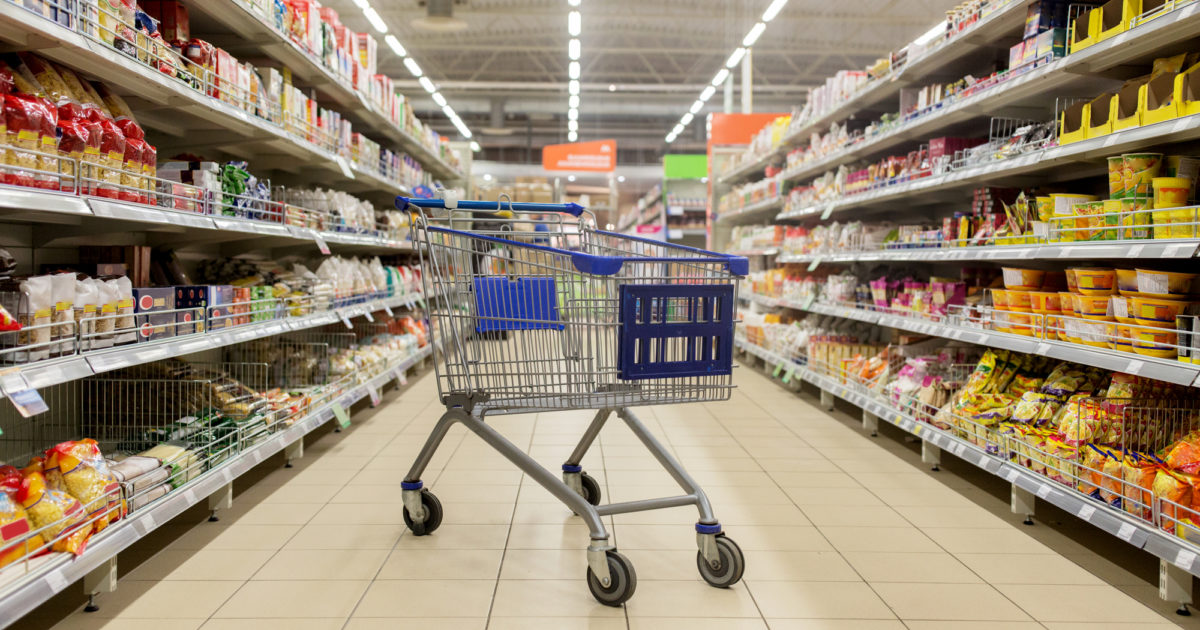The price of foods hit by extreme weather are rising over four times faster than others in the average shop according to new analysis from the Energy & Climate Intelligence Unit (ECIU) [1].
Using the latest ONS inflation data (August 2025), the analysis finds that although these items make up just 11% of the average shopping basket, they account for nearly 40% of all food price inflation.
Prices for these five foods – butter, beef, milk, coffee and chocolate – have risen by an average of 15.6% over the past year, compared with just 2.8% for other food and drink [1].
The findings come as food inflation remains a key contributor to the UK’s headline inflation rate, with the Bank of England warning that extreme weather is increasingly influencing prices [2], making it harder for them to bring inflation back to the two percent target. The analysis also challenges recent reports that increases to the minimum wage, employer national insurance and the introduction of a packaging tax are driving inflation. These are unlikely to have had a major impact on the five foods that ECIU have found to be driving inflation.
Chris Jaccarini, food and farming analyst at the Energy and Climate Intelligence Unit (ECIU) said: “Shoppers will have noticed that the price of the weekly shop has shot up in recent years. At 73p, a pint of milk now costs 23p more than it did at start of the gas crisis [1]. Milk, butter, beef, chocolate, coffee and olive oil have all been hit by extreme weather and have all become much more expensive. Both butter and beef prices have been driven up by poor grass growth after a historically hot, dry summer, forcing farmers to rely more heavily on bought-in feed. At the same time, a virus outbreak in European dairy herds, which scientists warn is more likely due to climate change, has kept demand for British dairy high.
“While a higher minimum wage and national insurance contributions play a role in food price inflation, they don’t explain why coffee, chocolate or butter prices are surging. Climate shocks are a big factor for these products though, and until we reach net zero emissions and stabilise the climate, households will keep seeing prices rise.
“After the warmest spring and summer and the driest spring in over 100 years, England had its second worst harvest on record this year [3]. This follows last year’s poor harvest which came after incredibly heavy rainfall, made worse by climate change [4]. We have now seen three of the five worst harvests on record this decade driven by extreme weather, telling a story of escalating climate impacts that farmers are struggling to cope with.”
As highlighted in the Bank of England’s August Monetary Policy Report ‘…dry weather conditions are pushing up the production costs of beef and some dairy products in the UK and elsewhere, as cows must be fed silage earlier in the year due to less grass growth [2].’ Alongside a major outbreak of bluetongue hitting milk production in Europe, the risk of which is known to be increased by climate change, [5] this has tightened the availability of milk, and cream pushing up prices.
It is not just British-grown foods that are at risk. The UK imports around 40% [6] of its food from overseas, including many staples like rice, bananas and tea, which we cannot simply grow at home. The commodity price for cocoa, essential for chocolate, has more than tripled in the past three years and doubled in the past two years [1], after extreme heat and rainfall in West Africa hit the cocoa harvest [7]. Much of this surge has yet to fully reach consumer prices, which have risen by a quarter in the past two years and 45% over three years.
Similarly, commodity prices for coffee rose sharply at the end of 2023 and continued to climb through 2024, reaching a peak in March 2025. Again, extreme weather played a major role, with drought in key coffee producing regions such as Brazil and Vietnam [1]. According to FAO estimates, it typically takes around one year for changes in raw coffee prices to filter through to retail prices, with effects lasting at least four years [8].
Anna Taylor OBE, Executive Director of the Food Foundation said: “We are seeing the price of certain products being driven up by extreme weather. This is a worrying trend. Government must treat this as a food security issue, and take steps to build the resilience of farming and our supply chains to shocks, so we can better buffer them. Otherwise, the weekly shop will keep getting more unpredictable – and more unaffordable – for millions of households.”
In 2022–23, climate impacts added an estimated £360 to the average UK household food bill [9]. Government forecasts suggest that the climate exposure of British households will deepen, with over half of UK fruit and legume imports coming from climate-vulnerable countries by 2050 [6].
Chris Jaccarini, food and farming analyst at the Energy and Climate Intelligence Unit (ECIU) said: “Central banks are clear that climate change increases food prices in ways they cannot control or predict, creating systemic risk to our food system [10]. There is no monetary policy lever they can pull to address this. Only by reducing our emissions to net zero and bringing balance back to our climate will we limit the impact of climate change on food prices in the future.”
ENDS
Notes to editors:
1. The analysis, which focused on butter, beef and veal, whole milk, chocolate and coffee, is available to download here.
2. August Bank of England Monetary Policy Committee Report and recent interview with Isabel Schnabel, Member of the Executive Board of the ECB
3. ECIU Comment on 2025 Defra Harvest Statistics
4. https://www.worldweatherattribution.org/autumn-and-winter-storms-over-uk-and-ireland-are-becoming-wetter-due-to-climate-change/
5. https://www.nature.com/articles/s41558-018-0376-6
6. Government -produced UK Food Security Report 2024.
7. https://www.worldweatherattribution.org/dangerous-humid-heat-in-southern-west-africa-about-4c-hotter-due-to-climate-change/
8. Reuters reporting on FAO report.
9. ECIU, Climate, Fossil Fuels and UK Food Prices: 2023
10. https://www.ecb.europa.eu/pub/pdf/scpwps/ecb.wp2821~f008e5cb9c.en.pdf
For more information or for interview requests:
George Smeeton, Head of Communications, ECIU, Tel: 07894 571 153, email: george.smeeton@eciu.net













